Why Is My Dog Not Eating His Food But Will Eat Treats?
It can be concerning when your dog suddenly refuses to eat his food but shows no hesitation in gobbling up treats. This behavior is common among dogs and can stem from various reasons. Understanding these reasons can help you address the issue effectively.
First, let’s explore some common factors that might lead to your dog not eating his regular food, even though he enjoys treats:
- Change in Routine: Dogs thrive on consistency. A change in feeding times, location, or even the type of food may disrupt their eating habits.
- Food Preferences: It’s possible that your dog simply prefers the taste of treats over their regular food. Tasty treats can be more appealing than standard dog food.
- Health Issues: Sometimes, a lack of appetite can indicate underlying health problems. Conditions like dental issues, nausea, or gastrointestinal problems can make your dog uncomfortable eating regular food.
- Stress or Anxiety: If your dog is feeling stressed or anxious due to changes in the home, he might refuse to eat. This can be triggered by new pets, moving homes, or even loud noises.
- Picky Eating: Just like humans, some dogs can be picky eaters. If you have recently switched to a new dog food brand, this might not appeal to your dog’s taste buds.
- Overfeeding of Treats: If you give your dog too many treats, he might not feel hungry enough to eat his regular meals. Dogs often eat treats first because they’re exciting and rewarding.
To help determine the likely cause of your dog’s behavior, observe him closely. Is he showing any other signs of illness, like vomiting or lethargy? If so, it might be time to consult a veterinarian.
In some cases, your dog’s refusal to eat regular food while still accepting treats can lead to nutritional deficiencies. Here are a few tips to encourage your dog to eat his food again:
- Stick to a Schedule: Create a feeding routine and stick to it. This helps signal to your dog when it’s time to eat.
- Mix in Treats: Temporarily mix some treats with his regular food. This can make his meals more enticing. Gradually reduce the number of treats as he gets used to his food again.
- Experiment with Food Types: If your dog refuses dry kibble, consider trying wet food. Many dogs find wet food more appealing.
- Limit Treats: Cut back on treats between meals to ensure your dog feels hungry when it’s time to eat.
- Vet Consultation: If the behavior continues for more than 24 hours, or you notice other health concerns, don’t hesitate to consult your vet.
It’s important to provide your dog with balanced nutrition, so always prioritize healthy meals over treats. If your dog is only ever fed treats, he might miss out on essential vitamins and minerals found in his regular food. You can find more information about dog nutrition at AKC or Natura Pet.
In cases where food refusal is linked to stress or anxiety, consider creating a calming environment for your dog. This might include providing a quiet, safe space for meals or incorporating calming products, such as puzzle toys that can keep your dog distracted. For further insights on stress management for dogs, check out American Kennel Club.
By following these tips and remaining vigilant about your dog’s overall health, you can help him return to his normal eating habits. It can be alarming to see your dog not eating normally, but with the right approach and care, you can resolve this issue and ensure your furry friend is happy and healthy again.
Understanding Changes in Your Dog’s Appetite
It’s concerning when your furry friend suddenly stops eating their food but still shows interest in treats. Understanding the reasons behind changes in your dog’s appetite is essential for both their health and your peace of mind. A diminished interest in their regular meals but a willingness to accept treats can stem from various factors, both behavioral and physiological.
Common Reasons for Changes in Appetite
Several factors might lead to this behavior:
- Health Issues: Medical problems such as dental disease, gastrointestinal issues, or infections can affect your dog’s ability to eat. If you notice other symptoms like vomiting or lethargy, it’s time for a vet visit.
- Dietary Preferences: Dogs can be picky! Sometimes, they may simply prefer the taste of treats over their regular food. If you frequently give treats, your dog might start holding out for those instead.
- Stress and Anxiety: Changes in environment, such as moving to a new home or the arrival of a new pet, can cause stress. Stress can lead to decreased appetite, even if your dog is willing to eat their favorite snacks.
- Age-Related Changes: As dogs age, their metabolism slows, and their taste preferences might change. Older dogs may not require as much food and may lean towards easier-to-chew options.
- Feeding Schedule: Inconsistent feeding times can confuse your dog. A strict schedule helps dogs understand when it’s time to eat and can improve their appetite.
Observing Behavioral Changes
Monitoring other behaviors can provide insight into your dog’s appetite changes. Here’s what to look for:
- Changes in energy levels
- Alterations in drinking habits
- Signs of discomfort or pain (like whining or avoiding food bowls)
- Increased begging for treats
If your dog displays any concerning changes in behavior along with their poor appetite, these might require immediate attention from a veterinarian.
Addressing the Issue
Here are some effective strategies to handle your dog’s selective eating:
- Consult a Veterinarian: If your dog’s refusal to eat persists beyond a couple of days, seeking professional advice is key. Health issues can often go unnoticed, and a vet can help diagnose underlying problems.
- Evaluate Diet Quality: Ensure the food you are feeding is high-quality, appropriate for your dog’s age and health, and preferably contains real ingredients. Consider upgrading to a better quality brand or trying a different flavor or protein source.
- Limit Treats: To promote a healthier appetite for regular meals, limit the number of treats you give. Try to provide treats in moderation, ensuring it’s a special occasion rather than an everyday practice.
- Adjust Feeding Routine: Stick to a consistent feeding schedule. Leaving food out can just confuse your dog. Instead, offer the meal only during designated times and take it away after 15-20 minutes if not consumed.
- Create a Comfortable Eating Environment: Try to make the eating area calm and inviting. If there are distractions, like loud noises or other pets, dogs may feel reluctant to eat.
When to Seek Veterinary Help
Always trust your instincts. If your dog refuses meals for a day or two but still drinks water, it might not be an emergency. However, the following circumstances warrant a call to your vet:
- Continued refusal to eat for over 48 hours
- Excessive vomiting or diarrhea
- Significant weight loss or observable changes in body condition
- Signs of severe pain or discomfort
Changes in your dog’s appetite can indicate health issues or simply a preference shift. Monitoring their behavior will provide crucial clues on how to proceed. Always err on the side of caution when it comes to your dog’s health.
For more information on canine health and wellness, check out AKC Dog Nutrition or ASPCA Dog Care.
The Role of Health Issues in Canine Eating Habits
Understanding why your dog might not be eating their food can be distressing for any pet owner. It’s important to identify if health issues are influencing your dog’s eating habits. Your dog’s unwillingness to eat its regular meals but still having a fondness for treats could stem from various health conditions. Being attentive to your dog’s behavior can help you spot any underlying health concerns.
Possible Health Issues Affecting Your Dog’s Appetite
Several health issues can lead to changes in your dog’s eating habits. Here’s a list of common medical concerns:
- Dental Problems: Issues like gum disease or broken teeth can make eating painful for your dog. If you notice bad breath, drooling, or difficulty chewing, a dental check-up might be necessary.
- Gastrointestinal Issues: Conditions affecting the gut, such as gastritis, inflammatory bowel disease, or parasites, can cause discomfort and a decreased appetite. Symptoms may include vomiting, diarrhea, or bloating.
- Systemic Illnesses: Diseases like kidney or liver dysfunction can affect how your dog feels overall, impacting their appetite. Dogs might avoid food due to nausea or discomfort caused by these conditions.
- Infections: Fever and pain due to infections can cause a dog to avoid their food. Changes in behavior, such as lethargy or unusual warmth, could signal an infection that needs attention.
- Medications: If your dog is on medications, side effects could suppress their appetite. Always consult your vet about any changes in eating habits after introducing new treatments.
Behavioral Factors
Sometimes, the issue may not be purely health-related. Behavioral problems can also affect your dog’s willingness to eat. Here are key aspects to consider:
- Teaching Unwanted Habits: If you frequently give treats, your dog may start to prefer them over their regular food. Ensuring proper feeding routines can help maintain their interest in a balanced diet.
- Changes in Environment: Dogs are sensitive to their surroundings. A new home, loud noises, or new pets can create stress and alter eating habits. Observing your dog’s reactions in these situations is essential.
- Age-Related Changes: As dogs age, they may develop sensitivities or preferences. Older dogs might prefer softer foods or have a decreased sense of smell, making them less enthusiastic about their regular kibble.
When to Seek Professional Help
If your dog stops eating its regular food but gobbles up treats, it’s a clear sign to consult a veterinarian. Monitor for additional symptoms like:
- Lethargy
- Weight Loss
- Vomiting or Diarrhea
- Changes in drinking habits
These symptoms can indicate a serious issue that requires prompt attention. Your vet can conduct physical examinations, blood tests, or imaging studies to determine the root cause of the appetite change.
Maintaining A Healthy Diet
Encouraging your dog to eat its food instead of just treats can enhance its overall well-being. Here are some strategies:
- Gradual Transition: If you’re changing your dog’s diet, do so gradually to avoid gastrointestinal upset. Mix small amounts of the new food with the existing one over a week.
- Enhance Food Appeal: Adding some water or low-sodium broth can make kibble more enticing. You can also try different brands or flavors that may be more appealing.
- Consistent Feeding Schedule: Establish regular meal times and limit treat intake to encourage hunger for their main meals.
Understanding the role of health issues in canine eating habits is crucial for ensuring your dog’s health. Stay observant of changes in behavior, and always prioritize routine check-ups with your veterinarian for preventive care.
For more expert information about canine health and behavior, check out American Kennel Club and ASPCA.
How to Make Mealtime More Appealing for Your Dog
Making mealtime appealing for your dog can drastically improve their eating habits and overall happiness. Discovering how to turn your dog’s mealtime into an exciting event can help solve any food aversion or lack of interest in their regular dog food. Here are various strategies to make mealtime more enjoyable for your furry friend.
Use Tasty Toppers
Adding toppers can be a simple way to enhance the flavor and scent of your dog’s food. Here are some popular options:
- Canned Pumpkin: This nutrient-rich addition adds flavor and is often enjoyed by dogs.
- Bone Broth: Pouring warm bone broth over dry kibble can entice your dog.
- Cooked Vegetables: Adding cooked carrots or green beans can make a dish more appealing.
- Wet Dog Food: Mixing in some wet food can introduce a different texture and taste.
Consider the Temperature
The temperature of your dog’s food matters just as much as the flavor. Often, dogs prefer their food warmed slightly, as it enhances the aroma. Simply warm your dog’s food in the microwave for a few seconds (ensure it’s not too hot) to bring out the scents that can attract them to eat more eagerly.
Create a Calm Eating Environment
Dogs thrive in a calm eating environment. Here’s how to create one:
- Quiet Space: Ensure your dog eats in a quiet area away from distractions.
- Consistent Schedule: Feed your dog at the same time each day to create a routine.
- No Interruptions: Make sure children and other pets do not disturb your dog while they eat.
Interactive Feeding Toys
Using interactive feeding toys not only makes mealtime fun but also engages your dog’s brain. Such toys can reinforce positive eating habits by making your dog work for their food. Here are a few types to consider:
- Food Dispensing Balls: These bounce around, dispensing food as your dog plays.
- Puzzle Feeders: These require your dog to solve a simple puzzle to access their food.
Experiment with Different Brands or Flavors
Sometimes the solution may simply be to change the brand or variety of your dog’s food. Different brands have unique flavors and ingredients, offering your dog new tastes to explore. Gradually introduce any new food to avoid stomach upset.
Balance Treats and Meals
It’s crucial to manage your dog’s treat intake. If they are getting too many treats throughout the day, they may not be hungry for their regular meals. Keep treats to less than 10% of their daily caloric intake to encourage them to eat their dog food. Here are some recommended healthy treats:
- Greenies: Good for dental health while being a tasty snack.
- Freeze-Dried Meat: A protein-packed, tasty option.
Maintain a Regular Feeding Schedule
Consistency plays a vital role in your dog’s mealtime habits. Feeding them at the same time each day helps regulate their hunger. Stick to a routine, and soon they’ll begin to associate those times with getting their food, which can enhance their overall excitement about mealtime.
Monitor Health and Consult a Vet
If you’ve tried various methods and your dog still refuses to eat their food, it might be time to consult a veterinarian. Health issues such as dental problems, gastrointestinal issues, or other medical conditions could be at play. Regular vet check-ups ensure your dog’s health remains a priority.
Creating a more appealing mealtime experience for your dog can transform their eating habits. You can innovate by using tasty toppers, varying their feeding environment, and introducing interactive feeding toys. Above all, keeping an eye on their health and establishing routines are integral to their well-being.
For more tips and guidance, visit AKC and Dog Food Advisor.
The Impact of Routine and Environment on Dog Eating Behavior
The eating behavior of dogs is influenced by various factors, but two standout elements are routine and environment. Understanding how these elements impact your dog’s desire to eat can help you address any unwanted changes in their eating habits. Let’s explore how these factors shape your furry friend’s mealtime experience.
The Importance of Routine
Dogs are creatures of habit, and establishing a consistent feeding schedule is crucial. A predictable routine helps your dog know when to expect their meals, fostering a sense of security and comfort. When you maintain a regular feeding time, you reinforce discipline and can help regulate their appetite.
Here are some key reasons why routine affects your dog’s eating behavior:
- Consistency Promotes Appetite: When you feed your dog at the same time each day, they learn to associate that time with meals. This routine can increase their appetite and enthusiasm for food.
- Establishes Trust: Dogs thrive on predictability. A set feeding schedule builds a relationship of trust between you and your pet, which can lead to a more relaxed and willing eater.
- Reduces Anxiety: A habitual routine can ease anxiety, making your dog feel more secure. A less anxious dog is more likely to feel comfortable eating.
The Role of Environment
The environment in which your dog eats is equally as important as the routine. Dogs are sensitive creatures, and their surroundings can significantly influence their willingness to eat. Here are some environmental factors to consider:
- Noise Levels: Loud sounds from traffic, construction, or even family activities can distract your dog during mealtime. A quiet, calm area allows them to focus on eating.
- Location: The place where you feed your dog matters. Some dogs prefer eating in a specific spot in the house, while others may feel more comfortable in a secluded area away from foot traffic.
- Companionship: If multiple pets are present, your dog might feel competition during mealtime. Sometimes, eating together can be beneficial, but for some dogs, feeding in a separate area is less stressful.
Assessing Changes in Behavior
If your dog suddenly stops eating their food but shows interest in treats, it may signal that something in their routine or environment has shifted. Consider these assessments:
- Changes in Routine: Have there been disruptions in your daily schedule? Late feedings or inconsistent times may confuse your dog.
- New Surroundings: Have you moved to a new home or brought in new pets? Changes can disturb feelings of safety, affecting their eating habits.
- Health Issues: Sometimes, underlying health concerns can affect appetite. If the behavior persists, consider consulting your veterinarian to rule out any health problems.
Improving Your Dog’s Eating Experience
To create an ideal atmosphere for your dog to enjoy their meals, you can implement these strategies:
- Establish a Feeding Schedule: Feed your dog at the same times every day to build a routine.
- Create a Calm Space: Choose a quiet location for feeding that is free from distractions, ensuring comfort and focus.
- Limit Treats: Because your dog may prefer treats to regular food, limit treat sizes and frequency so they don’t fill up on snacks.
By paying attention to routine and environment, you can help mitigate issues with your dog’s eating behavior. It’s important to remember that a dog’s emotions and physical settings can heavily influence their appetite. A happy, relaxed dog is a much more willing eater.
For further insights on canine eating habits and health, visit AKC Dog Eating Habits or check out PetMD on Dog Eating Behavior.
Your dog’s eating habits are a complex interplay of routine and environment. By being attentive to both, you can foster a more positive mealtime experience.
Conclusion
If you find yourself asking, "Why is my dog not eating his food but will eat treats?" you’re not alone. Understanding the various reasons behind your dog’s fluctuating appetite can be frustrating. It could be a change in routine, environmental factors, or even underlying health issues. Each of these factors plays a significant role in your dog’s relationship with mealtime.
One key takeaway is to observe any changes in your dog’s eating habits. Are there new stressors in their environment? Have there been adjustments in your home routine that might affect their comfort? Additionally, health concerns can cause them to turn up their noses at their food. Any notable changes, whether physical or behavioral, may signal the need for a vet’s visit.
Making mealtime more appealing can also be an effective strategy. Consider exploring options such as mixing in wet food, adding broth, or even warming their food slightly. These small changes can often entice even the pickiest eaters. Establishing a consistent feeding schedule in a calm environment can further encourage your dog to eat during designated mealtimes.
Ultimately, understanding your dog’s specific needs and preferences, while remaining attentive to their health, will go a long way in resolving their mealtime issues. By staying observant and proactive, you can help your furry friend enjoy their meals again, finding a balance between healthy nutrition and tasty treats.


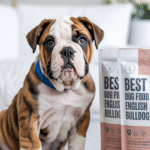
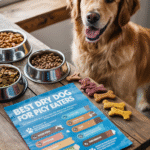
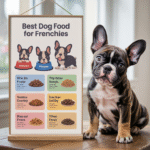
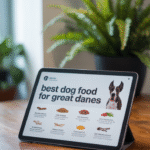
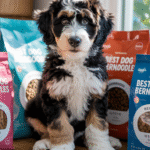
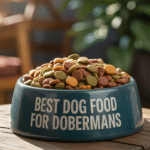
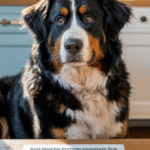

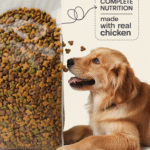
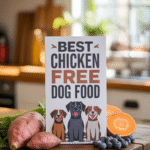

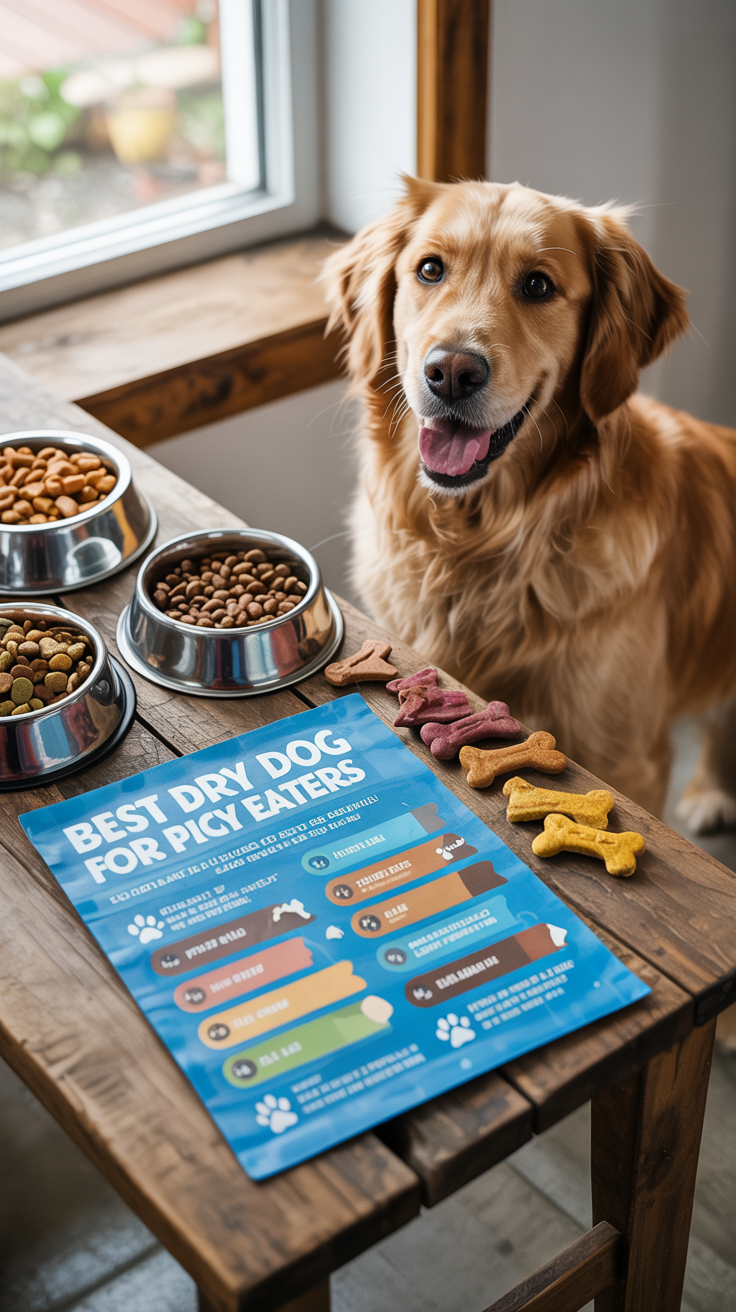
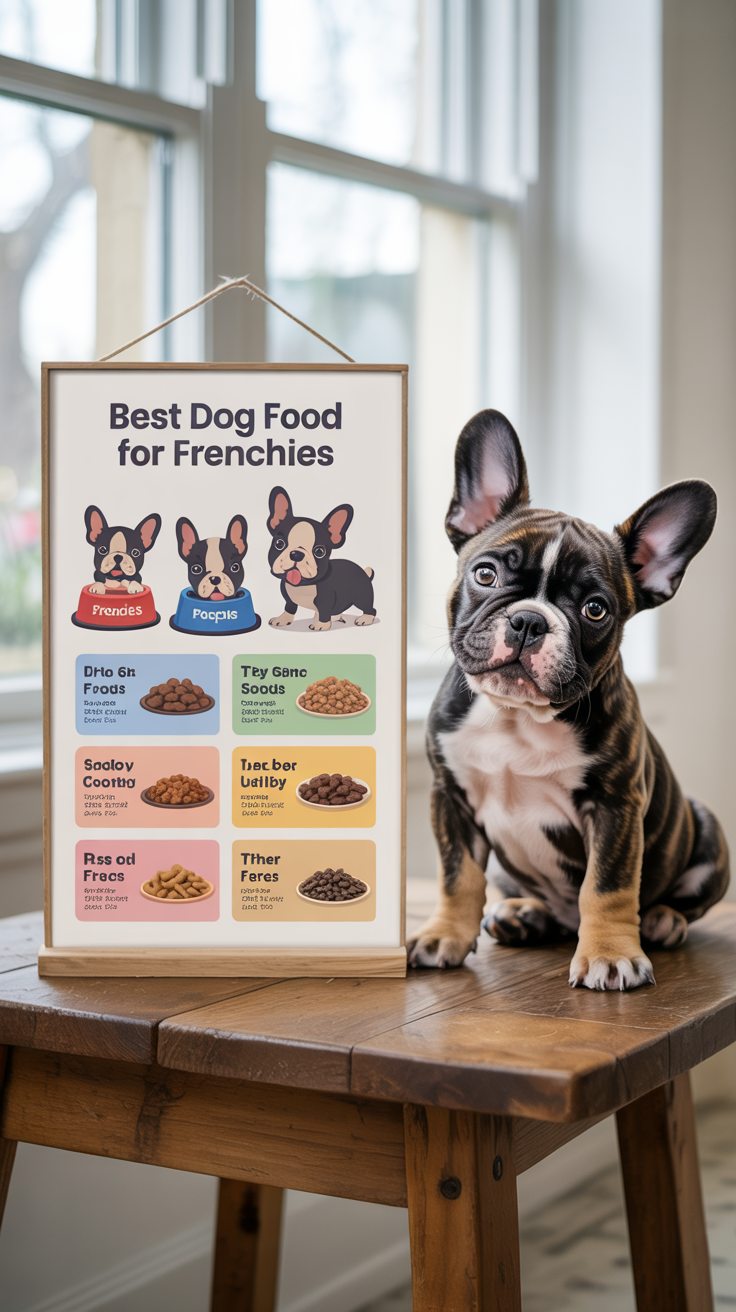
Leave a Reply